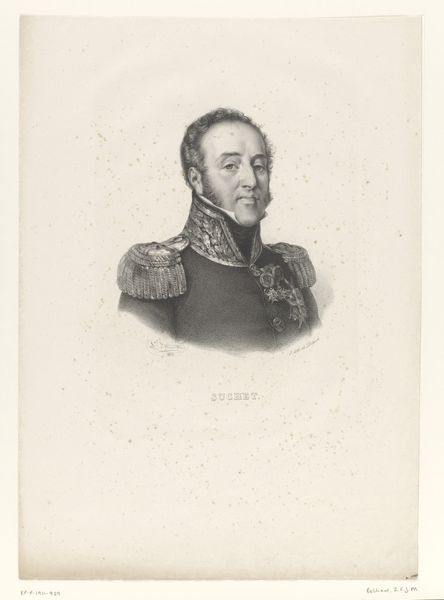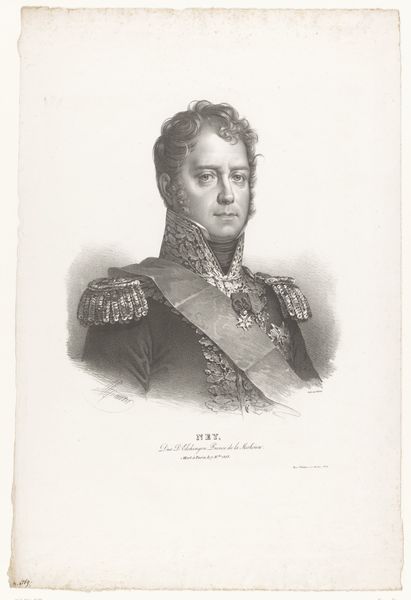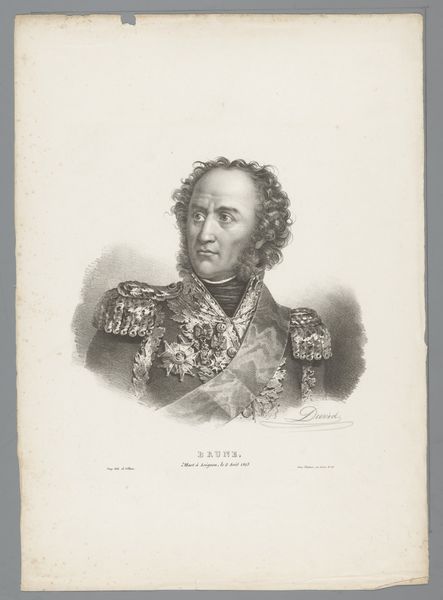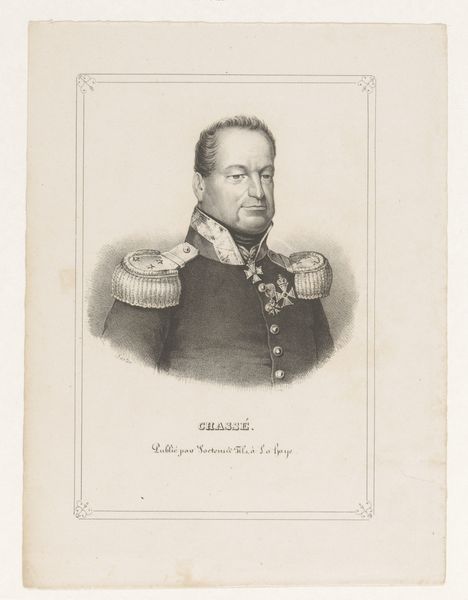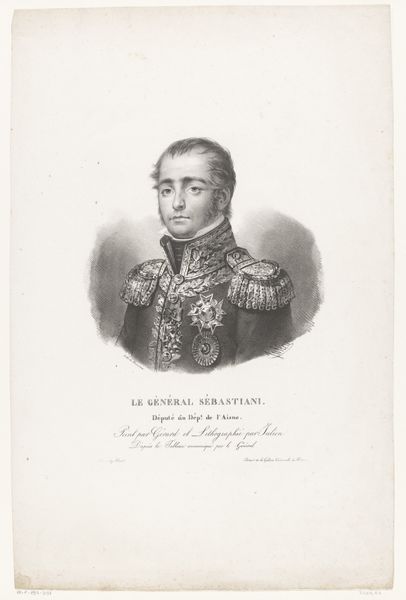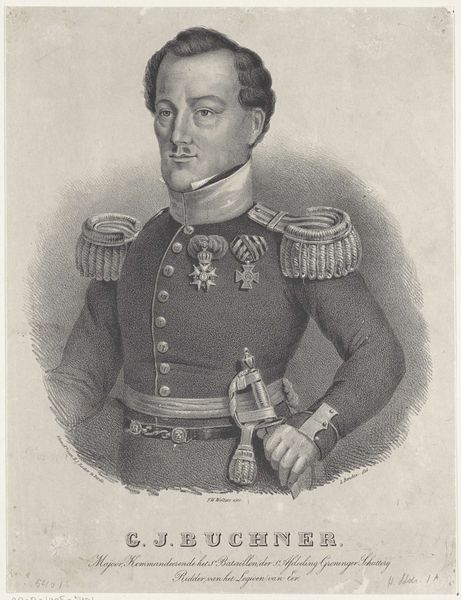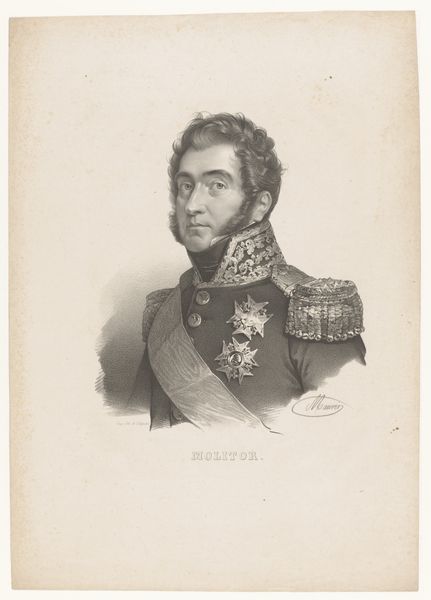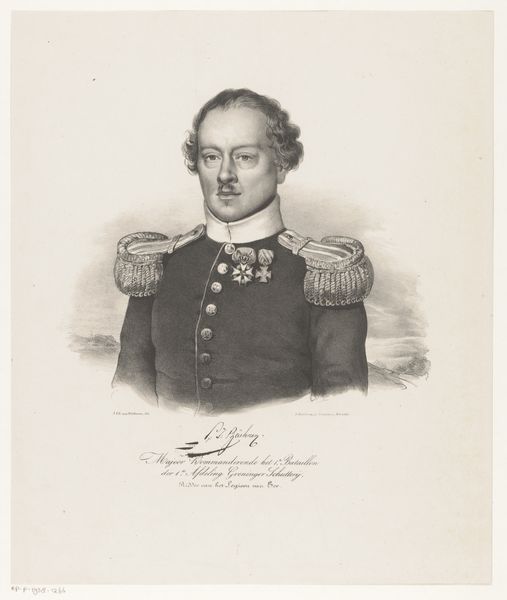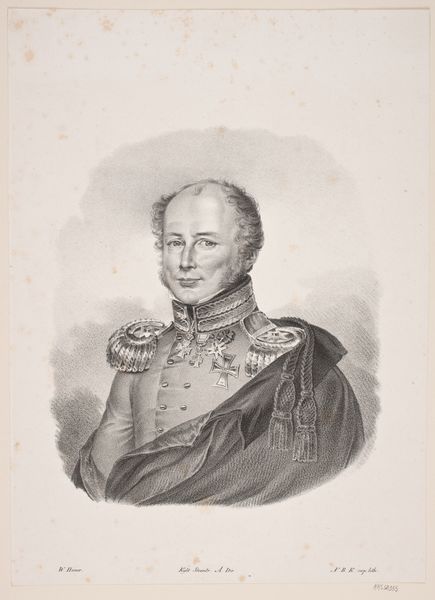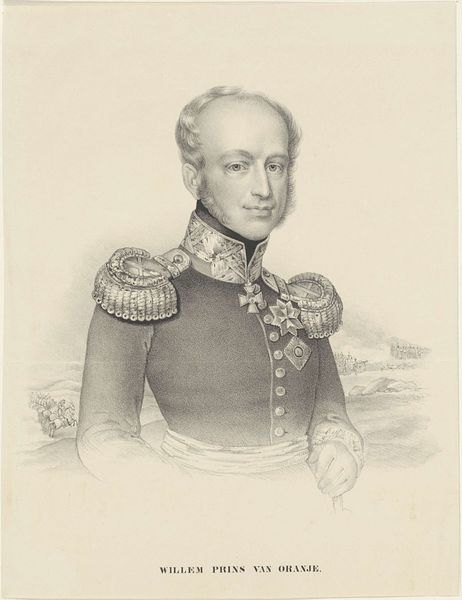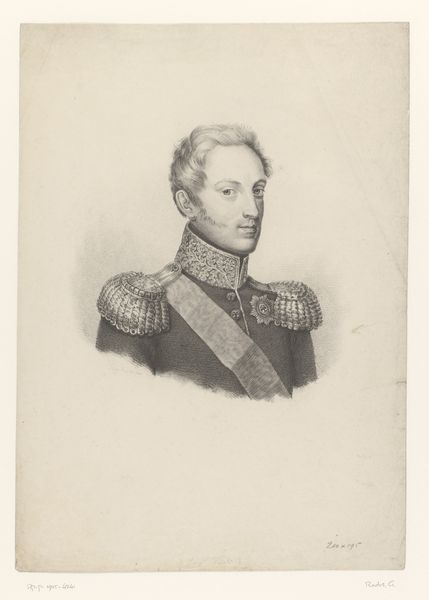
drawing, pencil
#
portrait
#
drawing
#
neoclacissism
#
caricature
#
pencil drawing
#
pencil
#
portrait drawing
#
academic-art
Dimensions: height 471 mm, width 331 mm
Copyright: Rijks Museum: Open Domain
Curator: Welcome. We're standing before Antoine Fulcrand Carrière's 1834 portrait of Marshal Louis-Gabriel Suchet, a prominent figure from the Napoleonic era. Carrière captured the Duke of Albufera in pencil, adhering to Neoclassical artistic conventions. Editor: My first impression is the sheer meticulousness of the rendering, from the fine details in the braiding to the texture of his face. The controlled gradation of shading suggests a very deliberate artistic process. Curator: Indeed. The artwork speaks to the burgeoning importance of public figures in 19th-century France and to the ways portraiture was utilized to enshrine and perpetuate the images of powerful individuals. This piece almost certainly served to reinforce Suchet's esteemed position within French society even after the end of Napoleon's reign. Editor: Note the artist’s skilled use of light and shadow to construct form and lend three-dimensionality. It's fascinating to observe the subtle variations in tone, especially when rendered in a medium as unforgiving as pencil. It demonstrates technical proficiency, of course, but also invites the viewer to contemplate the sitter's inner character. Curator: His portrayal seems deliberately intended to convey respectability, a common strategy used for public image management at the time. But the hint of a smirk and a somewhat dismissive upward cast to the eye challenges the overall image of stoic composure. What sociopolitical nuances might that suggest? Editor: Perhaps a touch of ironic detachment on the part of the artist? There’s a definite formality to the pose. And it must have taken an inordinate amount of patience to capture these elements precisely, down to each button and flourish on his military regalia. Curator: Certainly, academic artistic techniques of this era served to legitimize prevailing power structures by presenting authority in a dignified, yet often aloof, light. Consider, though, the role the artist played by humanizing—however slightly—this imposing figure. Editor: Ultimately, it’s this dynamic tension between minute observation and formal composition that truly holds my gaze. It makes me consider art’s capacity for conveying status while simultaneously engaging on an individual level with the human subject. Curator: For me, Carrière's portrait opens up valuable conversations about the function of art as an apparatus of nation building. By investigating such works we uncover so much about a society's values and aspirations.
Comments
No comments
Be the first to comment and join the conversation on the ultimate creative platform.
